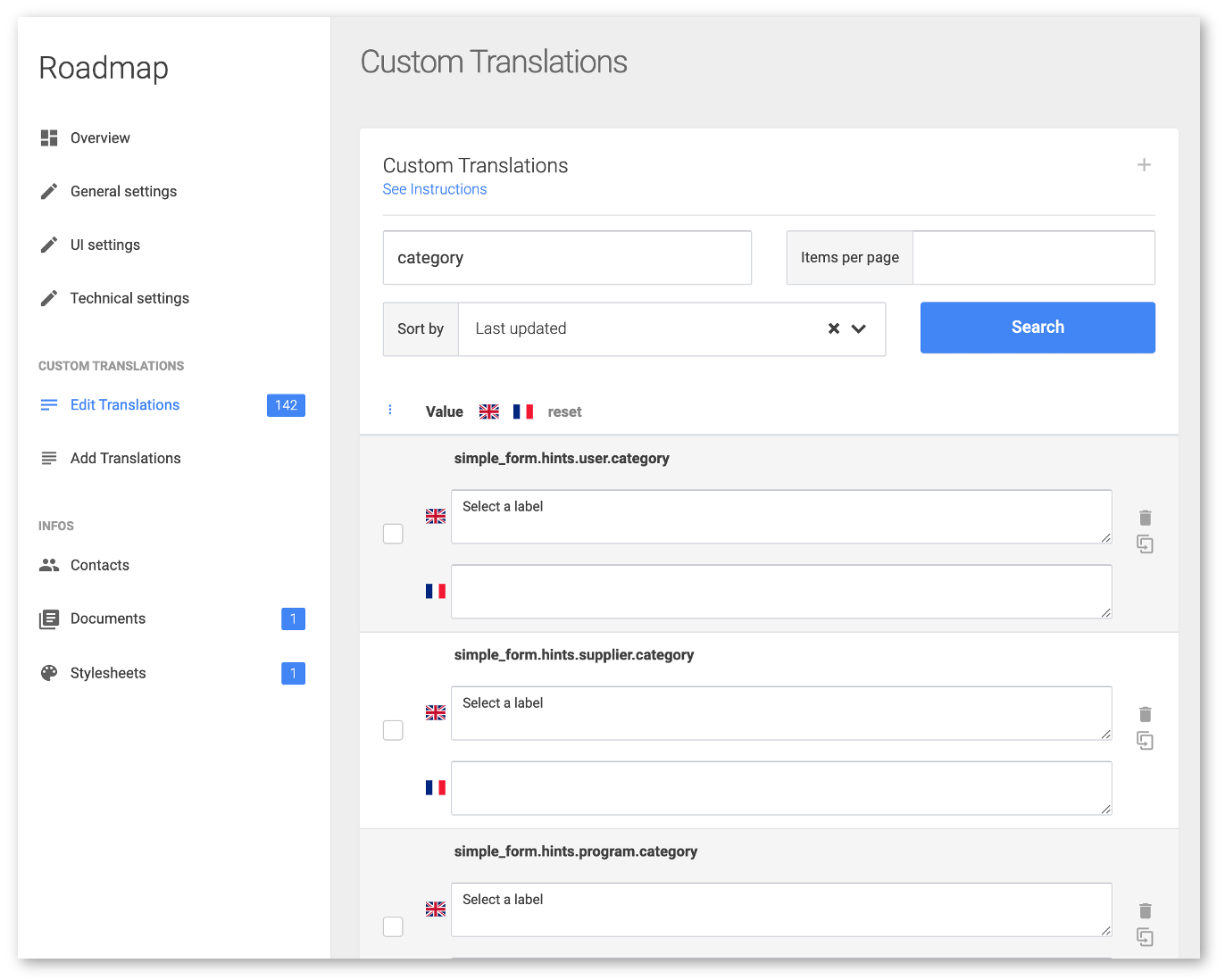How We Eat Our Own Dog Food

Jean-Michel Gigault
Discover some of the features of Per Angusta and learn how the Tech team is using them to collaborate and track the progress of the roadmap.
Per Angusta is a tool for Procurement Performance Management, in which project management is a key feature. Implementing workflows is powerful thanks to a large number of available configurations: Statuses, contributor types, document types, notifications, list of values, approval flows, and more. This adaptability goes as far as allowing us to use it as a Development Project tracker. We are our own users.
By the way, my name is Jean-Michel, and I am a committed engineer in charge of the Tech team as the Head of Technology. Our applications are coded with Ruby on Rails!

Eating your own dog food consists in reusing the products and services you are delivering to the clients for your own purposes. When efficiently used, it brings a lot of benefits such as improved collaborators engagement, continuous identification of what the clients face, and also a full control of the tools the collaborators are using everyday.
We have a particular experience in this area at Per Angusta, beyond the Tech team as I am writing in this post: Sales and Delivery are also collaborating within the Project tracker for their own.
Pipeline module
The Pipeline module is the flagship of the application. It is where the Procurement teams report their targets and achievements to get reports on their performance. The module is mainly based on two models: Projects and Savings, where the projects hold targets and savings the actual achievements. It allows a fine tracking of the progress based on multiple dimensions such as countries, teams, categories, stakeholders, etc.
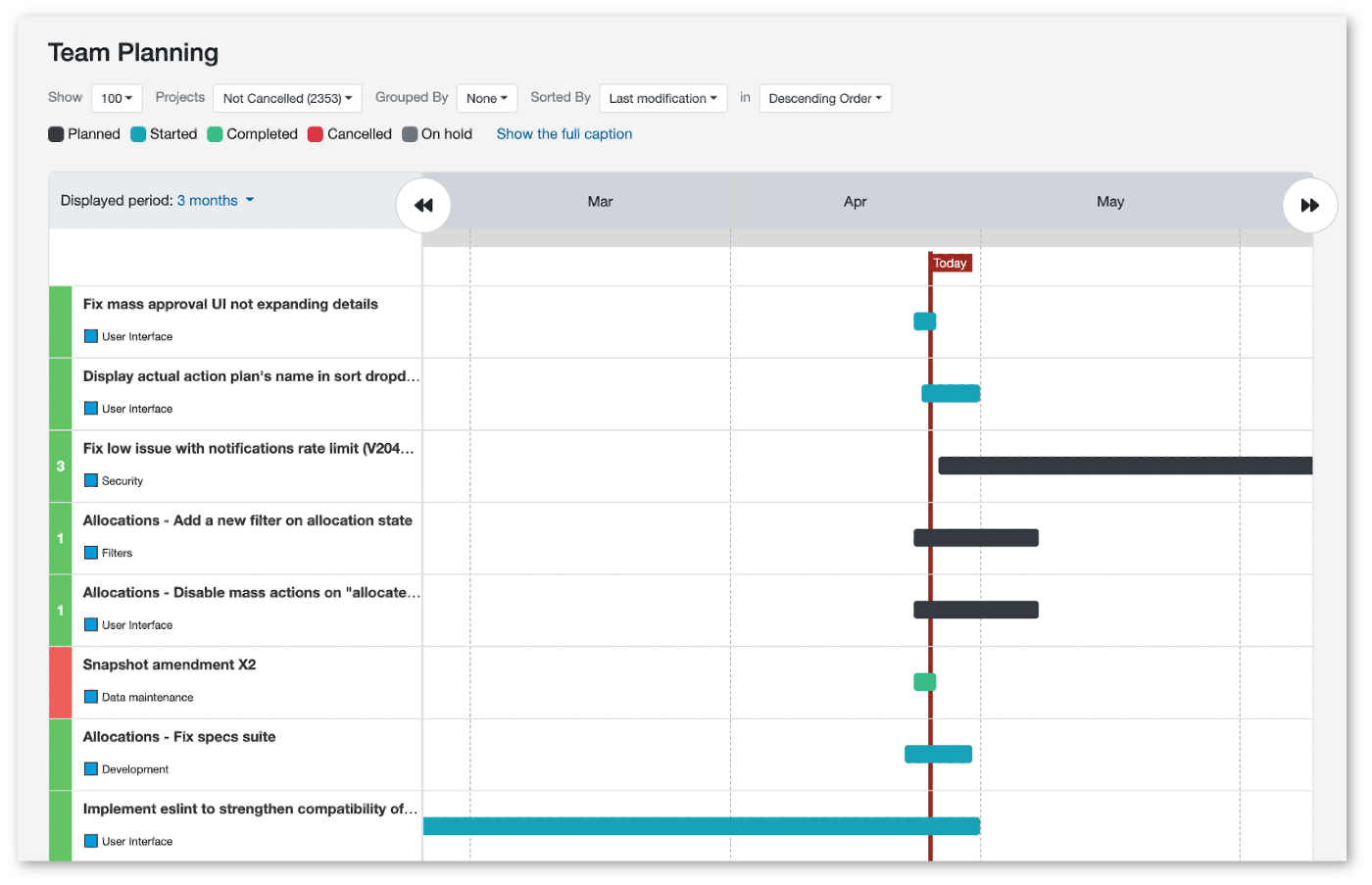
The Tech team of Per Angusta is using it on a daily basis to track all running projects (features, maintenance operations, bug fixes, etc) as if they were Procurement, simply omitting the financial parts of the flow used by the buyers.
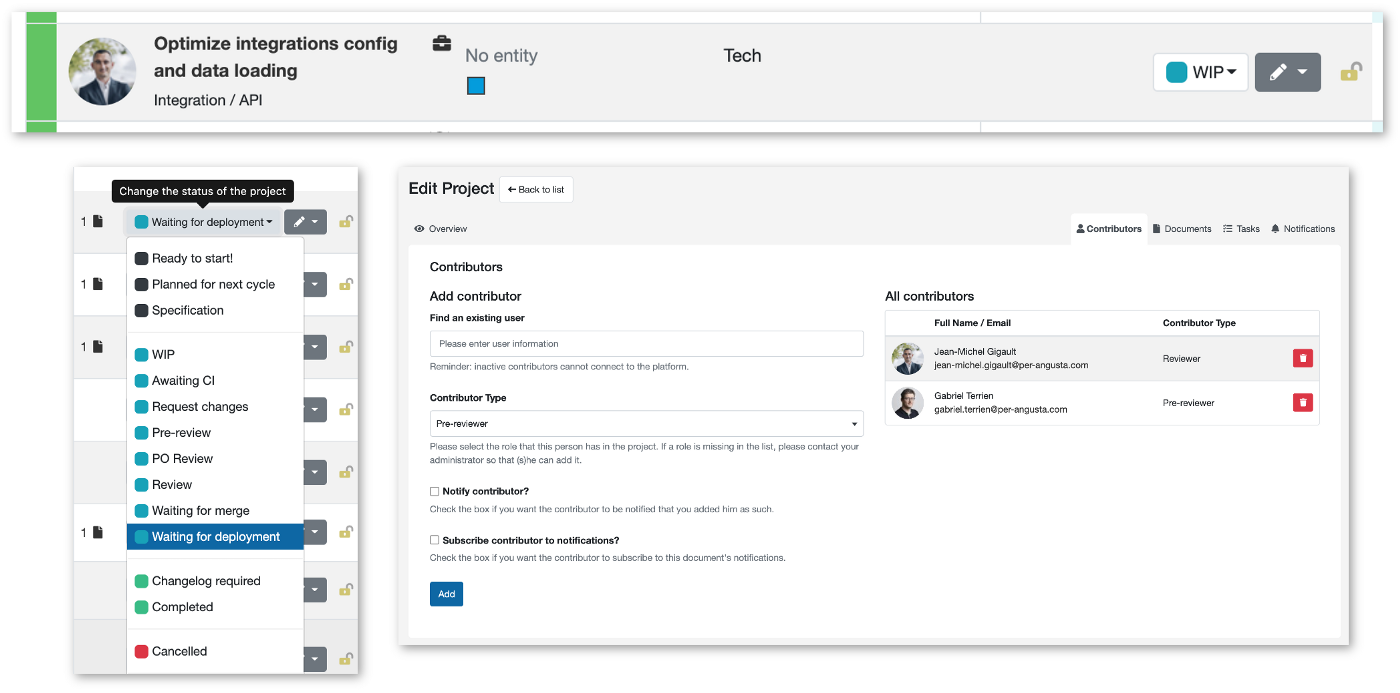
Opportunities
The Opportunities module stands in the upstream phase of projects’ Pipeline. It is where buyers can track savings opportunities that can then be approved and planned as project, or rejected. An opportunity can be private so that buyers can also track simple ideas before submitting them to the team.
Product and Delivery teams of Per Angusta, among with the Tech team, are using this module as a backlog. Each week, standard operations are approved and assigned to a collaborator into the Pipeline of projects, and the other opportunities can be planned in our development cycles, accordingly with their priority, value and ease of implementation.
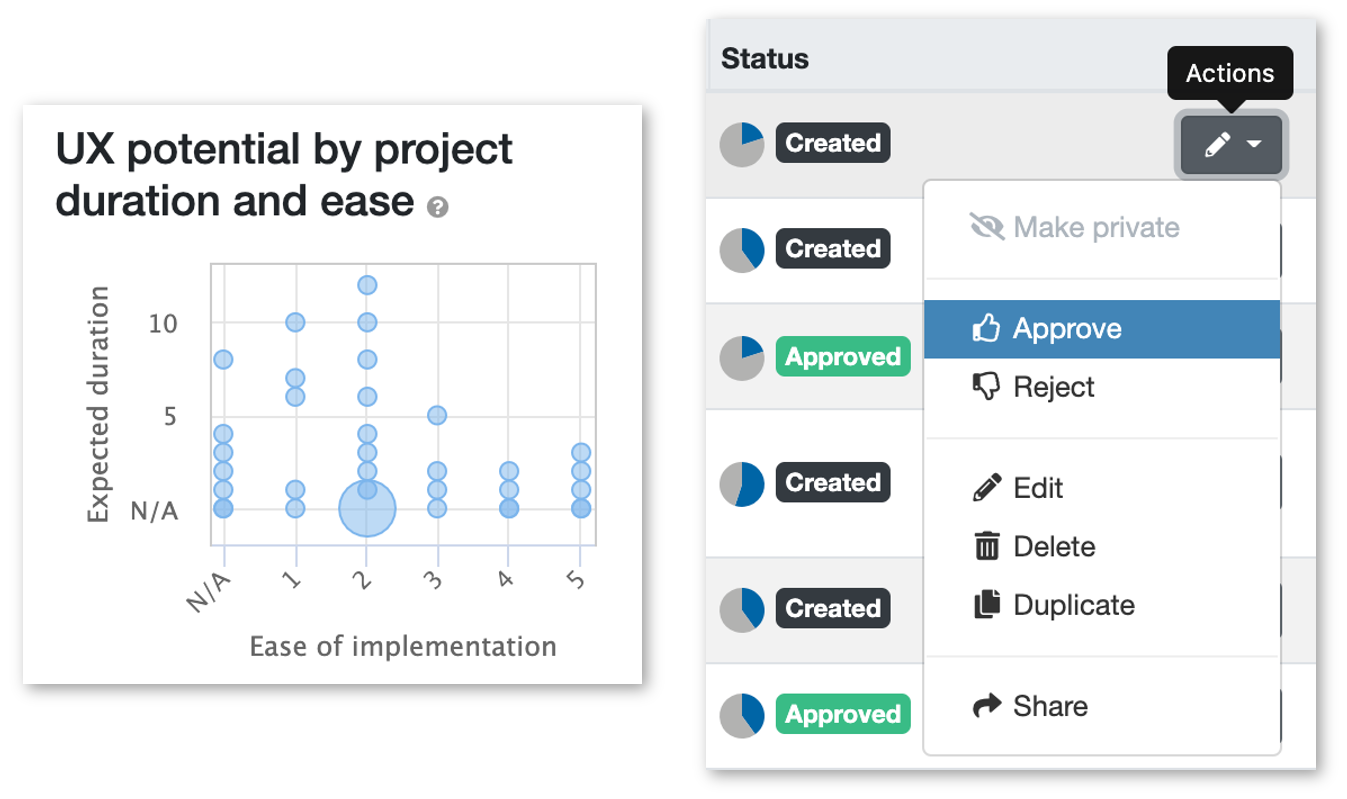
Programmes
A Programme aims at grouping projects and savings together among wide Procurement strategies, to model synergies across countries or a different dimension, and with identified objectives, risks, approach and governance.
The Tech team of Per Angusta is using it to track long running actions with multiple projects, iterations and involved collaborators.
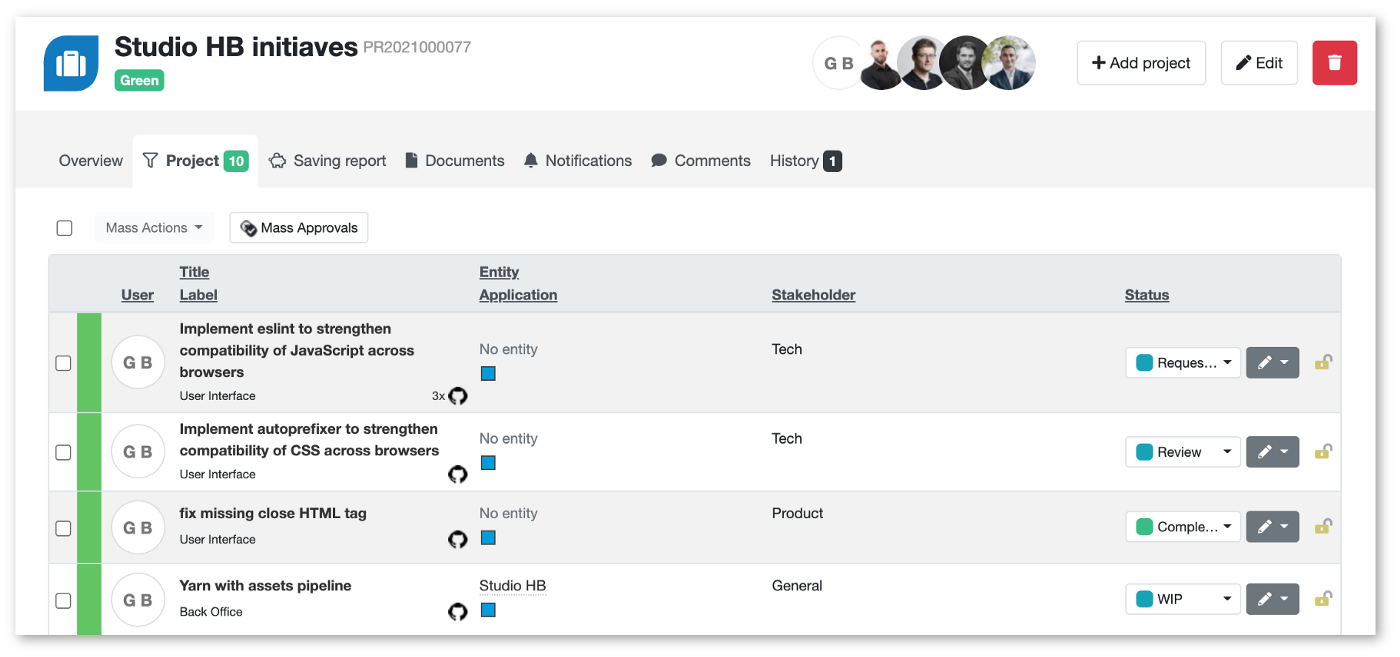
SmartGates
The SmartGates module is a configurable state machine that brings Procurement teams a way to implement their own business rules into the Pipeline module. Defined filters and events can trigger actions, such as notifications or approval requests. In this way, finance users and country leaders can finely track, approve or reject buyers’ actions.
The Teach team of Per Angusta is using it to strengthen the quality of tracked information, for instance by preventing misbehaved deletions, making fields mandatory depending on other fields, or requiring specific approvals depending on the status of completion.
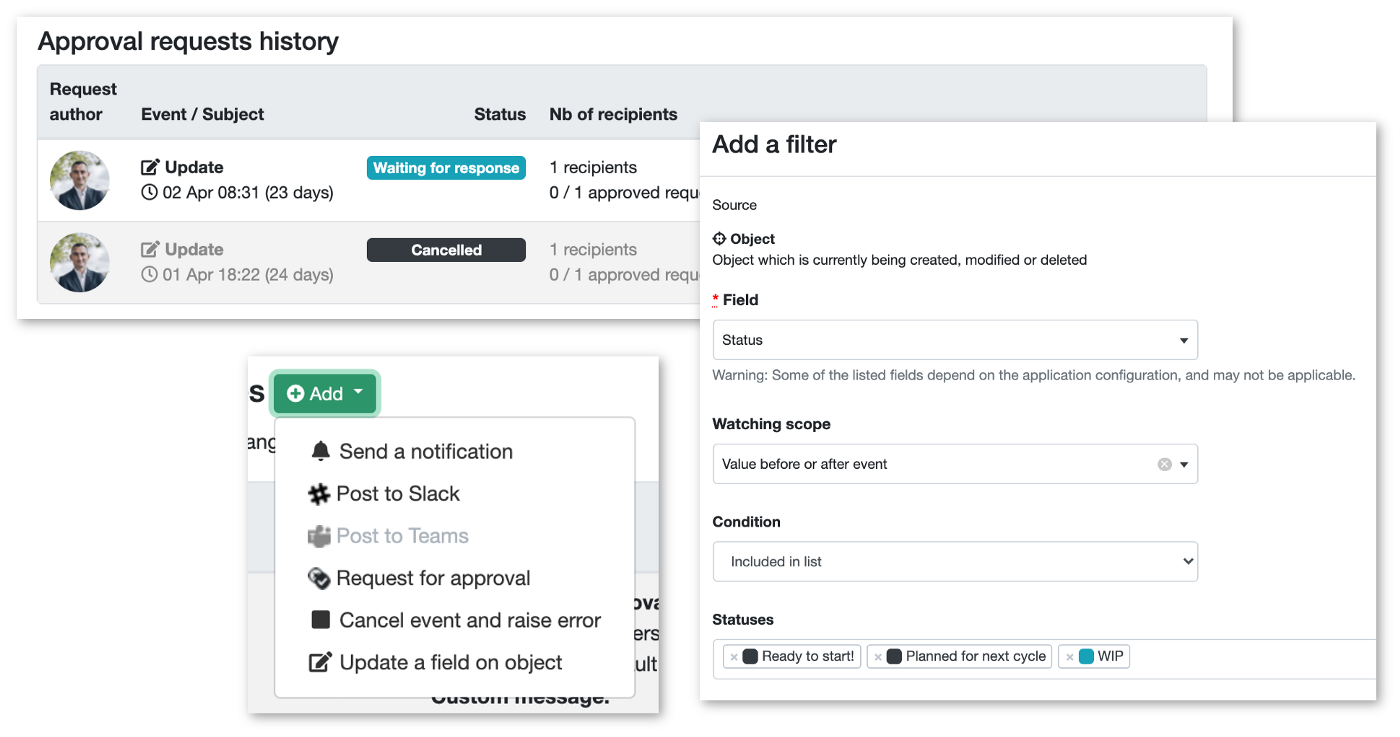
Integrations
The application is integrated with more than 20 third party solutions, and also large number of client’s IT to facilitate users management (SSO and user account provisioning) but also to import and export data in automated ways. One of the category of integration is related to suppliers Sourcing, whose buyers are initiating directly from a Pipeline’s project. The Pipeline module becomes a powerful hub for buyers to track projects, initiate sourcing events and then report results back into savings.
In this way, the Tech team of Per Angusta tracks Pull Requests from Github with the same UI as for Sourcing integrations. Each project can be linked with multiple PRs from the repositories of the organisation, making the Pipeline module a real hub for all teams to work together.

Surveys
The Surveys module allows buyers to conduct suppliers assessment campaigns with their stakeholders, through customisable questionnaires with sections, weighted answers, and other types of field.
The Tech team of Per Angusta is using it to perform recurring internal reports regarding the development team or incidents.
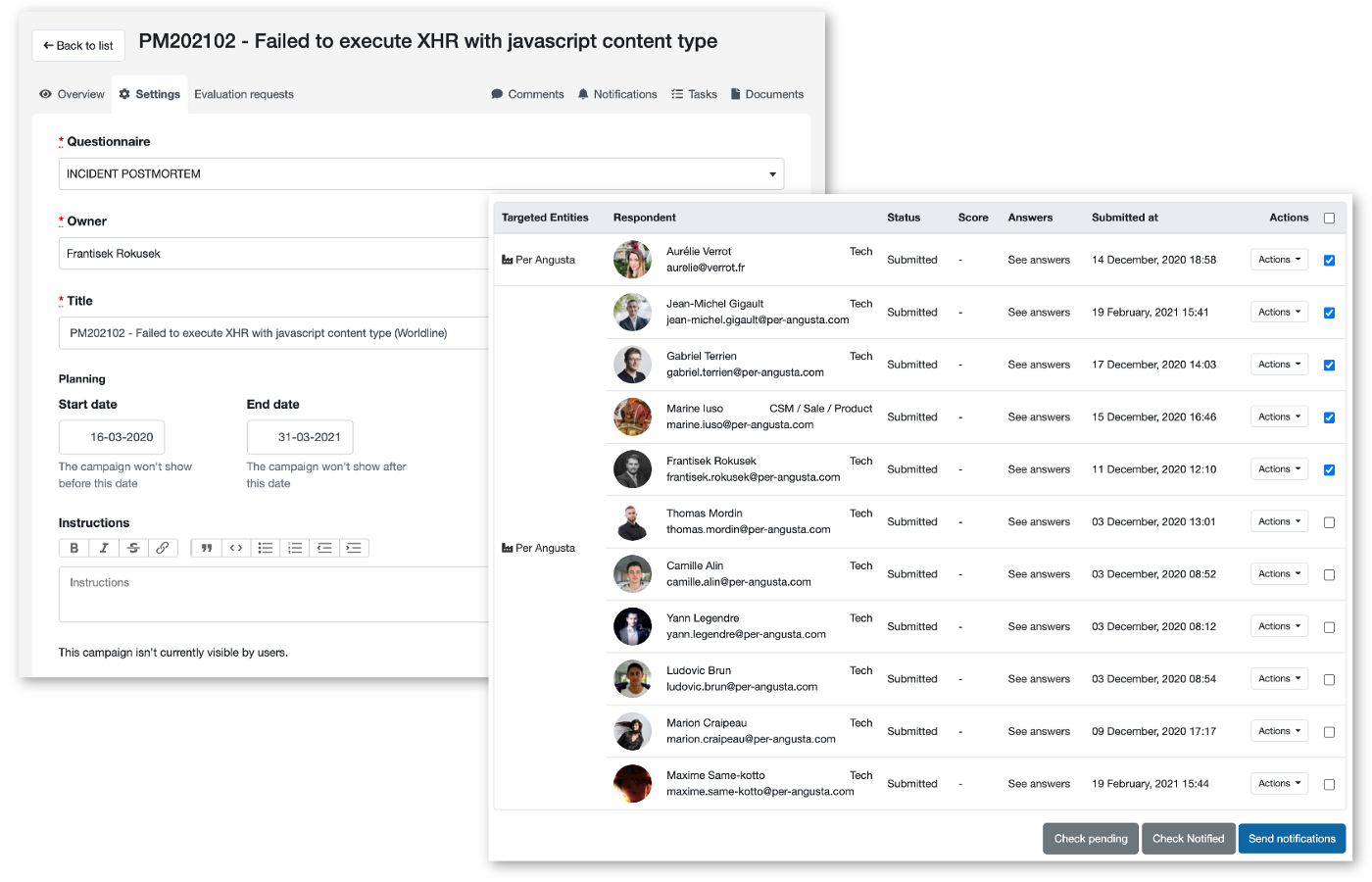
Custom Dashboards
The Custom Dashboards module aims at allowing clients to build their dashboards on their own, based on data reported in the application. Beyond the builtin dashboards provided by the application, Procurement teams can produce their own, best suited to their needs, and especially for steering committees. This module includes an editor based on drag-and-drop and where multiple data sources can be exploited, to which clients’ administrators can access to.
The Tech team of Per Angusta has been building a few key dashboards for its own usage over the years, based on data from Pipeline and Surveys modules.
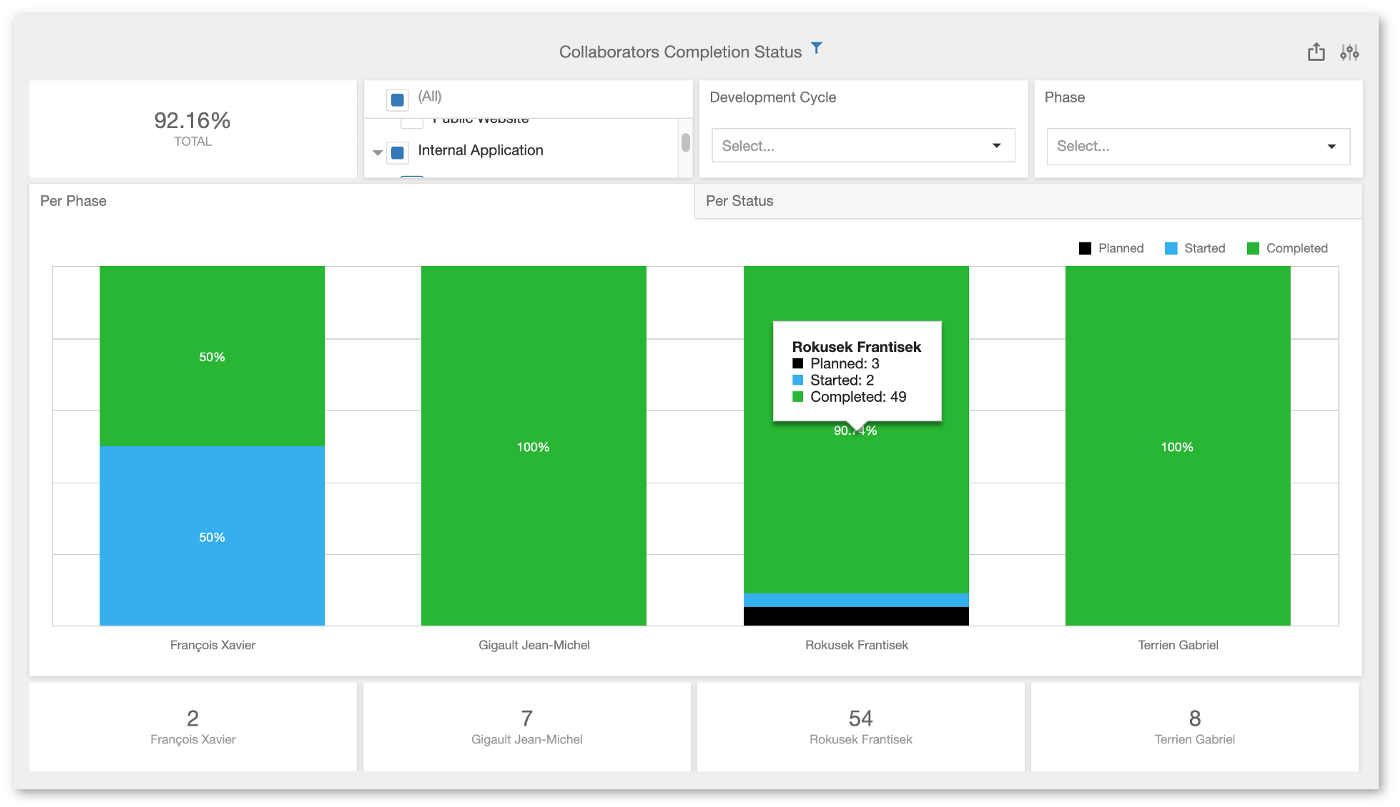
No custom development as a rule
Per Angusta provides a wide number of customisations as standard. The Procurement teams are able to implement a tool to which the buyers can easily integrate, where they find a familiar environment.
In particular, we have integrated a way to reword all UI elements accordingly with clients organisation. When, for instance, some are not organised by geographical countries but company subsidiaries, the term “country” is changed accordingly. Technically speaking, it is like having custom sets of YAML files for I18n, as a builtin feature. That is a key success for us to eat our own dog food.
Efficiently passing from a Procurement usage to the Development’s without side effect on the product is only possible because we’ve got a rule: Avoid custom developments that would break the business purpose. The application has been pimped using standard features used by the clients, simply made fit with our wording and team flows: Custom fields related to the development, statuses related to the continuous delivery process, key elements adapted to the organisation, and so on.
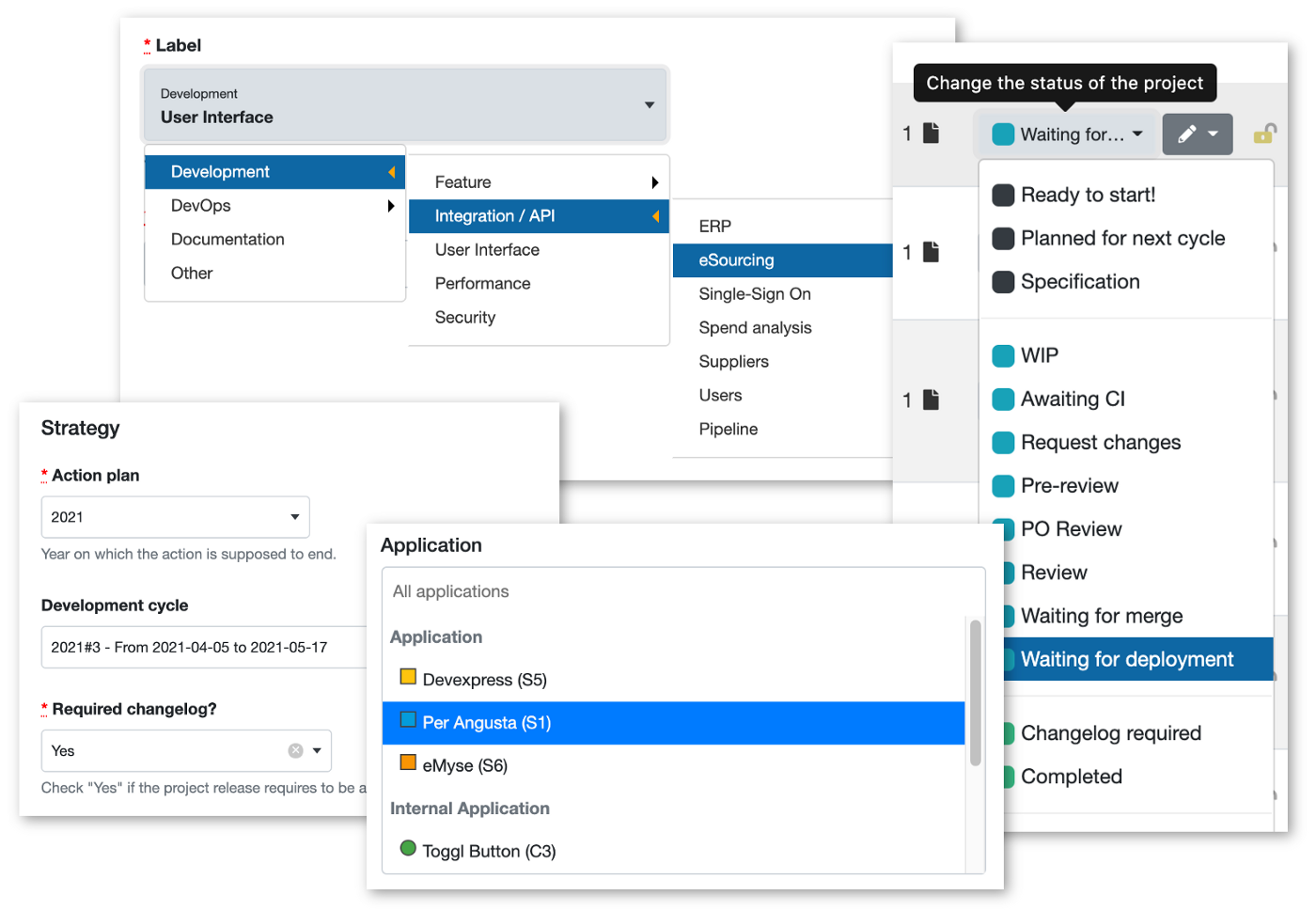
In Per Angusta, all the customisation can be directly achieved through the builtin back office where clients’ administrators have access to, or through an internal application developed specifically for the Delivery and Sales teams.
